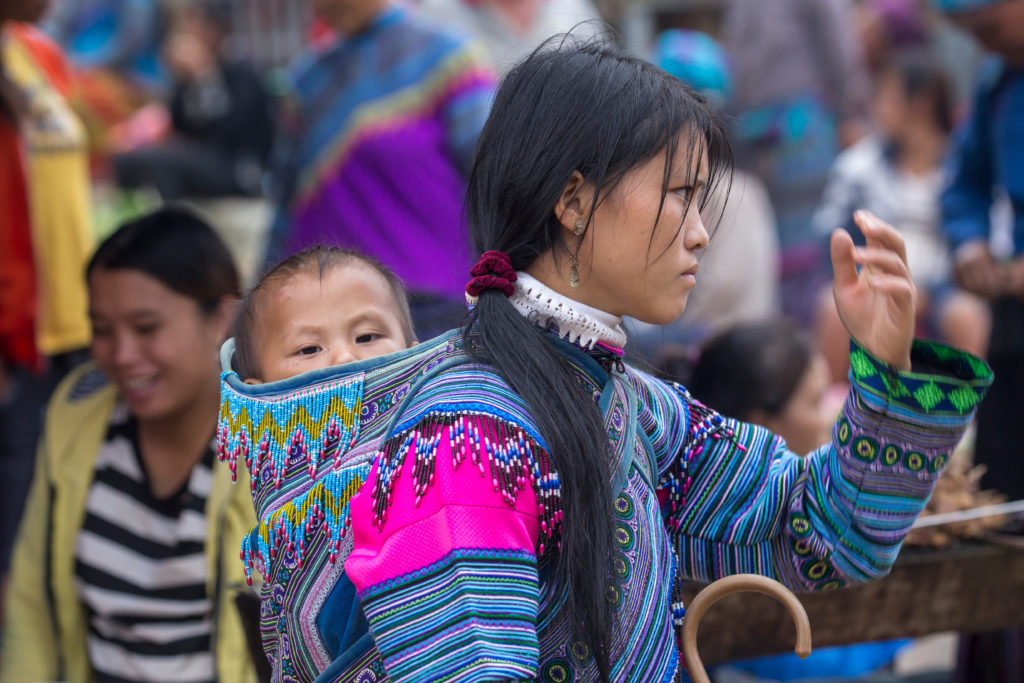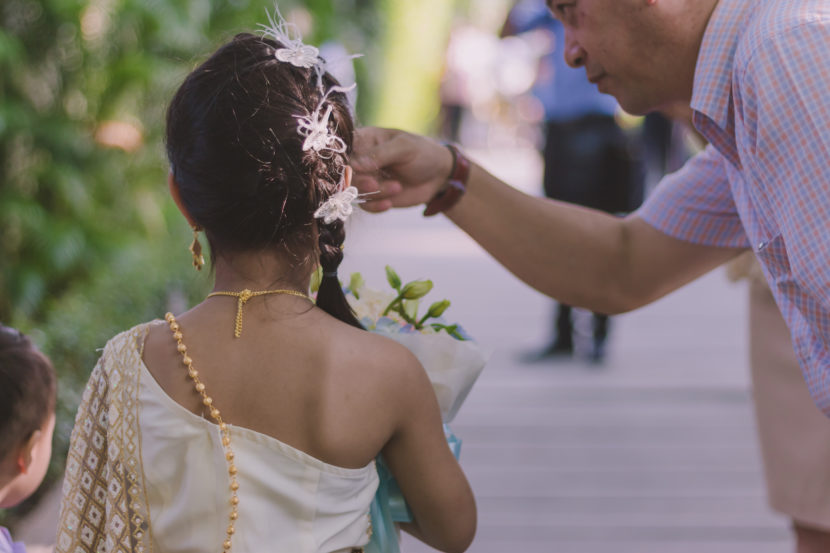The widespread and harmful practice of child marriage is regrettably no novelty and it still, affects the children and young girls of Vietnam as an ongoing practice. Poverty, unequal access to education, social context, gender norms, harmful practices, ethnicity, and bride trafficking are found to be the leading causes of the persisting practice of child marriages in Vietnam. Humanium calls for a nationwide policy to remedy gender inequality and ethnic marginalisation in order to ensure that all girls in Vietnam are provided with the same protection and opportunities.
Child marriage and gender inequality – a definition under international law
According to the United Nations Children’s Funds (‘UNICEF’), child marriage is defined as “any formal marriage or informal union between a child under the age of 18 and an adult or another child” (UNICEF, n.d.). Child marriages are considered to affect girls disproportionately, due to gender inequality (UNICEF, n.d.). Gender inequality is defined as “discrimination on the basis of sex or gender causing one sex or gender to be routinely privileged or prioritized over another” (Save the Children, n.d.). And as a result, thereof, globally, approximately one in five girls today are married before the age of 18, while “the prevalence of child marriage among boys is just one sixth that among girls” (UNICEF, n.d.).
According to UNFPA and UNICEF, there are 4 types of child marriages (UNICEF & UNFPA, 2018):
- Family arranged marriages – child marriage can be seen as a tradition and “is often linked to early labour”, which means that “poor families marry children to bring them into the family workforce (e.g., domestic work, agricultural labour)” (UNICEF & UNFPA, 2018).
- Love marriages – young couples would “drop out of school to get married or move in together without registration to avoid fines” (UNICEF & UNFPA, 2018).
- Marriage to ‘resolve pregnancy’ – “early pregnancy leads to child marriage to address the shame associated with premarital sex” (UNICEF & UNFPA, 2018).
- Bride abduction/trafficking – girls are being kidnapped without their consent and/or trafficked to China to be sold for marriage (UNICEF & UNFPA, 2018).
The Socialist Republic of Vietnam – obligations under international law
Vietnam holds an important position on the international scene. Notably, Vietnam has ratified multiple international conventions, such as the Convention on the Rights of the Child (‘CRC’) in 1990 and the Convention on the Elimination of All Forms of Discrimination Against Women (‘CEDAW’) in 1982 (United Nations Human Rights, n.d.). Accordingly, the Committee on the Rights of the Child sets a minimum age of marriage of 18 (UN Committee on the Rights of the Child, 2003), and the CEDAW obligates States parties to ensure free and full consent to marriage (Documents – CEDAW, 1981).
The government of Vietnam has enacted the Family and Marriage Law in June 2000, which sets the minimum legal age of marriage for women to 18 years-old, without any exceptions (National Assembly of Vietnam, 2000), and revised the Criminal Code in 2018, which now strengthens protection for children and includes more severe penalties for child marriages and trafficking of children (Vietnam Ministry of Foreign Affairs, 2018).
In addition, following the Sustainable Development Goals established by the United Nations, Vietnam has committed to eliminating “early marriage and all forms of gender-based violence” by 2030 (Vietnam Ministry of Planning and Investment, 2018). Moreover, Vietnam has committed to the ASEAN Declaration on the Elimination of Violence against Women and Violence against Children (2013), “which acknowledges the importance of strengthening ASEAN efforts to protect children from all forms of violence, including early marriage” (Girls Not Brides, n.d.).
The main causes of child marriage in Vietnam

The leading causes of the persisting practice of child marriages in Vietnam are the following:
- Poverty: children from impoverished households/families are being forced to marry before the age of 18 to the richest households in order to provide economic survival for their families (Girls Not Brides, n.d.).
- Unequal access to education: it plays “an important role in the prevalence of child marriage” so that “girls with no education are almost seven times more likely to marry in childhood than those who completed higher secondary education” (UNICEF & UNFPA, 2018). Indeed, “33% of women with no education were married before the age of 18, compared to only 1% who had completed tertiary education” (Girls Not Brides, n.d.).
- Social context: children can face “structural constraints, such as social norms that determine expectations of them or the absence of quality education and non-agricultural employment options” and due to the social stigma around pre-marital pregnancy, child marriage can be “used as a solution to address the unwanted pregnancy of a girl to ‘protect honour’ of the girl and her family” (UNICEF & UNFPA, 2018). Indeed, some girls reportedly marry “because they are afraid of getting pregnant outside of marriage and transgressing strict Vietnamese social norms” (Girls Not Brides, n.d.).
- Gender norms: Vietnamese women and girls are “traditionally seen as ‘low value’ and are expected to perform prescribed roles in the domestic sphere as wives and mothers, daughters and their status closely relates to these roles”, which “negatively affect girls’ returns on education, access to sexual and reproductive health services, decision-making power and control over resources, which exacerbates the prevalence of child marriage” (UNICEF & UNFPA, 2018).
- Harmful practices: Vietnam still has “a long-standing traditional practice of parents arranging marriages for their children” (Girls Not Brides, n.d.). Despite the Family and Marriage Law of June 2000 setting the legal age for women to marry at 18 years-old, “at the state and community level, traditional and customary laws still allow girls younger than 18 to marry with the consent of parents and other authorities” (UNFPA Vietnam, 2016).
- Ethnicity: child marriage is “highly concentrated in mountainous areas, especially among ethnic minorities (namely the Hmong, Xinh Mun, La Ha, Gia Rai, Raglay, and Bru-Van Kieu) in the northern mountains” (Girls Not Brides, n.d.).
- Bride trafficking: Vietnamese girls are being kidnaped, trafficked and reportedly sold as wives to Chinese men due to China’s gender imbalance (Girls Not Brides, n.d.).
Vietnamese regional rates and rates of child marriage among ethnic groups
While child marriages occur, unfortunately, worldwide, the underlying causes differ from country to country. In Vietnam, the regional rates are being recounted as the following: Northern Midlands and Mountainous areas with 18.8%, Red River Delta with 7.9%, North Central and Central Coastal Area with 8.5%, Central Highlands with 15.8%, South East with 7.8%, and Mekong River Delta with 13.8% (UNICEF & UNFPA, 2018).
Child marriage is often portrayed as a problem deeply rooted in traditional norms and practices belonging to ethnic minorities in Vietnam (UNICEF & UNFPA, 2018). There are 53 ethnic groups in Vietnam, in addition to the Kinh population, which constitutes the majority.
Ethnic culture in Vietnam is not monolithic and child marriages are not practiced in all ethnic cultures (UNICEF & UNFPA, 2018). While it is evidenced that a child being forced into marriage is likely to be part of one of the ethnic minorities in Vietnam (23.1%), still, a “significant percentage of Kinh women (9.2%) were married before their 18th birthday” (UNICEF & UNFPA, 2018).
It is important to understand that ethnic customs are not the cause of child marriages in Vietnam. As stated above, there are various reasons exacerbating the practice of child marriages, such as gender inequality, poverty and lack of access to education. Child marriages are deeply rooted in cultural practices and gender norms, which affect the country in its entirety, and cannot be associated only with ethnic groups.
More importantly, depicting young girls and women as being oppressed by patriarchal norms and customs only “reinforces gender inequality, one of the driving factors of child marriage” (UNICEF & UNFPA, 2018). Fundamentally, there is an absolute need for “a more refined understanding of cultural norms and practices that (…) can help prevent child marriage” (UNICEF & UNFPA, 2018).
Promoting gender equality to end child marriage in Vietnam
Throughout various international periodic reviews and various international summits, Vietnam has remained transparent. Vietnam has recognised “difficulties to end child marriage among ethnic communities, and agreed to review recommendations to continue carrying out policies to prevent the practise and review the law on marriage and family with a view to setting the same minimum age for marriage for women and men”, while remaining “committed to intensify their efforts and provide sufficient funding towards ending sexual and gender-based violence, including zero child, early and forced marriage, through evidenced and human rights-based policies and guidelines” (Girls Not Brides, n.d.).

Humanium finds the efforts of Vietnam towards combating the practice of child marriages to be promising. However, a more inclusive approach, destigmatising and demarginalising ethnic minorities of Vietnam, would be beneficial and bear results, as it would allow any national approach to protect all girls in Vietnam. Humanium remains committed to safeguarding children’s human rights, including their right to education, right to protection and reproductive rights. If you want to contribute to Humanium’s cause, please consider making a donation, volunteering or becoming a member.
Written by Moïra Phuöng Van de Poël
Bibliography:
Girls Not Brides. (n.d.). Region: East Asia and Pacific – Vietnam. Retrieved from Girls Not Brides at https://www.girlsnotbrides.org/learning-resources/child-marriage-atlas/regions-and-countries/vietnam/#:~:text=Child%20marriage%20is%20most%20prevalent,in%20the%20Mekong%20River%20Delta., accessed in February 2023.
National Assembly of Vietnam. (2000, June 9). Law No. 22/2000/QH10, on the Marriage and Family. Retrieved from National Legislation Website of Vietnam at https://vanbanphapluat.co/law-no-22-2000-qh10-on-the-marriage-and-family-passed-by-the-national-assembly, accessed in February 2023.
Plan International. (2019, January 19). Publications – Efforts to End Child, Early and Forced Marriage in Asia. Retrieved from Plan International at https://plan-international.org/publications/efforts-to-end-child-early-and-forced-marriage-in-asia/, accessed in February 2023.
Save the Children. (n.d.). Stories – Gender Discrimination Causes Inequality Between Girls and Boys Around the World. Retrieved from Save the Children at https://www.savethechildren.org/us/charity-stories/how-gender-discrimination-impacts-boys-and-girls, accessed in February 2023.
UN Committee on the Rights of the Child. (2003, July 1). General comment No. 4 (2003): Adolescent Health and Development in the Context of the Convention on the Rights of the Child. Retrieved from UN Committee on the Rights of the Child at https://www.refworld.org/docid/4538834f0.html, accessed in February 2023.
UNFPA Vietnam. (2016, October 25). News – Ending child marriage: towards a world where girls are free to dream. Retrieved from UNFPA Vietnam at https://vietnam.unfpa.org/en/news/ending-child-marriage-towards-world-where-girls-are-free-dream, accessed in February 2023.
UNICEF & UNFPA. (2018, March). Report – Ending child marriage, empowering girls: A joint discussion brief from UNICEF and UNFPA in Viet Nam on child marriage in Viet Nam. Retrieved from UNICEF at https://www.unicef.org/vietnam/reports/ending-child-marriage-empowering-girls, accessed in February 2023.
UNICEF. (n.d.). Child protection – Harmful practices – Child marriage. Retrieved from UNICEF at https://www.unicef.org/protection/child-marriage, accessed in February 2023.
United Nations Human Rights. (n.d.). UN Treaty Body Database. Retrieved from United Nations Human Rights Treaty Bodies at https://tbinternet.ohchr.org/_layouts/15/TreatyBodyExternal/Treaty.aspx?CountryID=192&Lang=EN, accessed in February 2023.
United Nations Office of the High Commissioner for Human Rights. (1981, September 3). Documents – CEDAW. Retrieved from United Nations at https://www.google.com/search?q=cedaw+pdf&oq=CEDAW+pdf&aqs=chrome.0.0i13i512l5j0i22i30i625j0i22i30l4.2928j0j7&sourceid=chrome&ie=UTF-8, accessed in February 2023.
Vietnam Committee for Ethnic Minority Affairs. (2018, January 11). Training session to decrease the child marriage and near blood-relationship marriage in ethnic minority areas in Dak Lak. Retrieved from Vietnam Committee for Ethnic Minority Affairs at http://english.ubdt.gov.vn/referencepage/ethnic-committee-with-local/training-session-to-decrease-the-child-marriage-and-near-blood-relationship-marriage-in-ethnic-minority-areas-in-dak-lak.htm, accessed in February 2023.
Vietnam Ministry of Foreign Affairs. (2018, November 14). Universal Periodic Review – Viet Nam – National report submitted in accordance with paragraph 5 of the annex to Human Rights Council resolution 16/21. Retrieved from United Nations Human Rights Council at https://documents-dds-ny.un.org/doc/UNDOC/GEN/G18/340/13/PDF/G1834013.pdf?OpenElement, accessed in February 2023.
Vietnam Ministry of Planning and Investment. (2018, June). Viet Nam’s Voluntary National Review on the Implementation of the Sustainable Development Goals. Retrieved from Vietnam Ministry of Planning and Investment at https://vietnam.un.org/en/4122-viet-nams-voluntary-national-review-implementation-sustainable-development-goals, accessed in February 2023.
VnExpress. (2016, October 27). News – Child marriage persists in Vietnam’s ethnic minority communities. Retrieved from VnExpress at https://e.vnexpress.net/news/news/child-marriage-persists-in-vietnam-s-ethnic-minority-communities-3489572.html, accessed in February 2023.


